The State of Solar: In the second of four forums at UMass, experts discuss challenges of siting solar facilities
| Published: 09-19-2023 5:32 PM |
Editor’s note: This is the second of four articles from the Western Massachusetts Solar Forum series taking place in September.
AMHERST — At the site of the old Mount Tom Station coal-fired power plant stands around 17,000 solar panels generating enough electricity to power 1,800 homes in the area.
For over 50 years, the coal plant generated energy before closing in 2014 due to unprofitability and the petitioning of local groups that cited widespread health issues and environmental concerns.
“Not only were we able to shut down the coal plant, but our vision had always been moving to clean energy,” Lena Entin said on behalf of Neighbor to Neighbor, the grassroots group that organized the “Mount Tom Coal to Sol” campaign that led the shutdown of the coal plant and conversion to solar panels. “It was an amazing transition.”
Land use was at the forefront of discussions at the second session of the Western Massachusetts Solar Forum series taking place in September.
On Tuesday, a panel of experts discussed solar and land use, delving into laws and regulations and also weighing the benefits and drawbacks of different types of solar and development locations.
The forums are organized by UMass Clean Energy Extension, Sen. Jo Comerford, Rep. Mindy Domb, and other solar stakeholders and specialists.
“Decarbonizing the power sector first is foundational to being able to decarbonize the rest of our economy,” said Michelle Manion, vice president of policy and advocacy at Mass Audubon. “The question is … how can we also do so with as much balance with impacts on our natural working lands as is feasible?”
Article continues after...
Yesterday's Most Read Articles
 A Waterfront revival: Two years after buying closed tavern, Holyoke couple set to open new event venue
A Waterfront revival: Two years after buying closed tavern, Holyoke couple set to open new event venue
 Services being held Thursday for Greenfield homicide victim
Services being held Thursday for Greenfield homicide victim
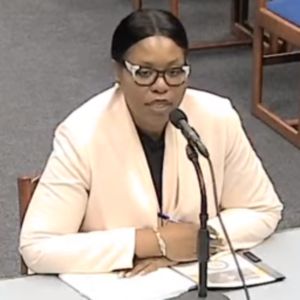 Island superintendent picked to lead Amherst-Pelham region schools
Island superintendent picked to lead Amherst-Pelham region schools
 Area property deed transfers, May 2
Area property deed transfers, May 2
 Granby Bow and Gun Club says stray bullets that hit homes in Belchertown did not come from its range
Granby Bow and Gun Club says stray bullets that hit homes in Belchertown did not come from its range
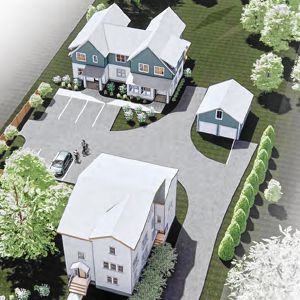 3-unit, 10-bed house in backyard called too much for Amherst historic district
3-unit, 10-bed house in backyard called too much for Amherst historic district
As of August 2022, there were 1,000 solar installations covering a total of 7,000 acres across Massachusetts, according to geography professor John Rogan, who shared data compiled by Clark University.
Of that solar acreage, 50% was built on forested land and 24% impacted cropland, while only 12% and 8% respectively covered barren and already developed land, said Rogan.
And a 2020 Mass Audubon report found that if current land use trends continue, as much as 150,000 acres of undeveloped land could be lost to meet state renewable energy goals.
Forests cover 3 million acres, or 60% of the state, according to Mass Audubon. On average, one acre of forested land stores 85 tons of carbon and filters $2,500 worth of drinking water annually, while Massachusetts forests in total sequester around 15% of the state’s annual emissions.
With the majority of Massachusetts solar developments taking the place of previously forested land, environmentalists and stakeholders are left to weigh the costs and benefits of solar versus forests.
“It’s an unnecessary question: What are the tradeoffs between the carbon sequestered by forests versus the carbon that is not emitted to produce electricity because it is instead being produced by solar?” Jonathan Thompson, senior ecologist at Harvard Forest, said at the forum.
Thompson repeatedly referred to that “unnecessary question,” saying that it is possible to keep forests intact and develop enough solar to meet state requirements. Nevertheless, he said the fact is that “we are losing forest to solar … so it’s worth investigating that question.”
As part of an effort to look into that question, a Harvard Forest team created an online calculator as a tool to weight the carbon tradeoffs associated with solar development on forested land, which can be accessed at bit.ly/hf-carbon-calc.
Even beyond carbon sequestration, forests also provide clean air and water, prevent erosion and flooding, and support biodiversity — all reasons environmentalists point to as reasons to develop solar elsewhere.
“It takes large, intact, well-connected habitats to support this rich diversity [of plants and animals] over time,” said Andy Finton, conservation ecologist at The Nature Conservancy. “These same places are critical to our own health and well being, our communities, our economies, our quality of life.”
As part of the Massachusetts Clean Energy and Climate Plan for 2025, the state’s goal is to permanently protect 30% of undeveloped farmland soils.
The state’s 2022 Healthy Soils Action Plan has a twofold approach to the use of farmland for solar development.
First, it calls for the improvement of farmland protection by incentivizing new solar development on already developed lands with “co-benefits” like parking lots or rooftops.
At the same time, the plan also recommends ongoing evaluations of dual-use solar, which involves the use of solar panels on farmland such that agricultural activities are able to occur simultaneously.
“The tradeoffs between agricultural production and energy production is going to vary with both the farm-related factors and the solar factors,” said UMass Extension Agriculture Director Clem Clay.
Those factors include things like variability in soils, types of crops, ownership tenure and management structures.
“Crops vary a lot in their adaptability to solar. … Some crops may succeed in that setting, but farmers will typically lose flexibility once panels are installed,” said Clay. “Another thing that I think is often forgotten is that the benefits of solar revenue may or may not flow to those who are responsible for agriculture production on the farm.”
“Everybody wants to simplify things to a win-win. But I think that’s, that’s probably, it’s just not never going to be that simple,” he said.
From an environmental standpoint, the built environment represents the ideal location for new solar development. That’s because putting solar panels on rooftops and parking canopies doesn’t disrupt natural working lands.
Andy Toomajian, manager at Solar Energy Business Association of New England, called parking canopy solar panels “an awesome strategy” for using the built environment to support solar energy needs.
“The environmental impacts are almost nothing … and everybody likes shaded parking” said Toomajian. “But it’s not as simple as necessarily just throwing them up. You have to sort of rethink the whole picture of how that lot is working,” he added that costs can add up and engineering gets complicated.
Rooftops present the lowest cost and fastest option for solar development, he said. In fact, 47% of the electrical grid could be supported by solar capacity on already existing rooftops, according to the Mass Audubon Losing Ground report.
But, as Clark University’s John Rogan stated, only 8% of solar exists on already developed land.
Josh Hilsdon, a consultant with PV Squared, a Greenfield-based solar company, said there are a number of challenges that come with solar development in the built environment.
From a working perspective, building solar on rooftops and other already developed land is physically challenging, which often leads to people shortening their careers at a time when the solar industry already faces workforce shortages.
Plus, building solar on developed land also comes with a host of requirements to satisfy around municipal permitting, inspections, fire code, setback, utility service, transformers and electrical licensure.
“There’s a real interest in trying to put as much solar on built lands as possible… But it’s going to take some incentives to try to get the solar built in the areas where we want it to be built rather than in the areas that it’s going to disrupt,” said UMass Extension Professor Scott Jackson, reading an audience member’s question to the panel. “What’s it going to take to move the solar forward, but in the areas where we would like to see it be?”
“I think that gets to the crux of a lot of what was talked about today,” he said.
There’s a real interest in trying to put as much solar on built lands as possible. And a lot of the brown fields and and the landfills have already been developed in that way.
The third session in the solar forum, to be held on Tuesday Sept. 19, will include discussion on solar access, distribution of solar benefits, local solar ownership models, community-shared solar equity, and power dynamics between developers and communities.
The event is open to the public, and registration and other information can be found at https://cvent.me/Onzl9G.
Maddie Fabian can be reached at mfabian@gazettenet.com.
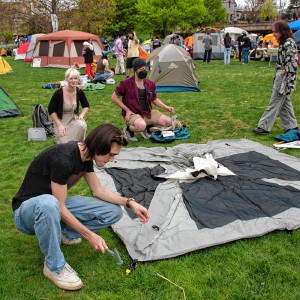 Pro-Palestinian encampment disperses at UMass, but protests continue
Pro-Palestinian encampment disperses at UMass, but protests continue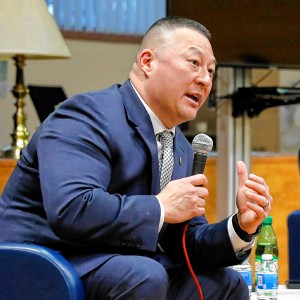 Amherst council confirms Gabriel Ting as police chief
Amherst council confirms Gabriel Ting as police chief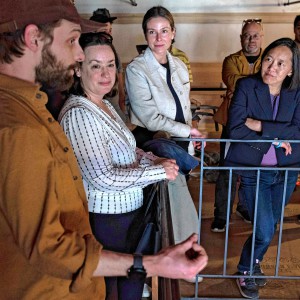 Music key to Northampton’s downtown revival: State’s top economic development leader tours city
Music key to Northampton’s downtown revival: State’s top economic development leader tours city 
